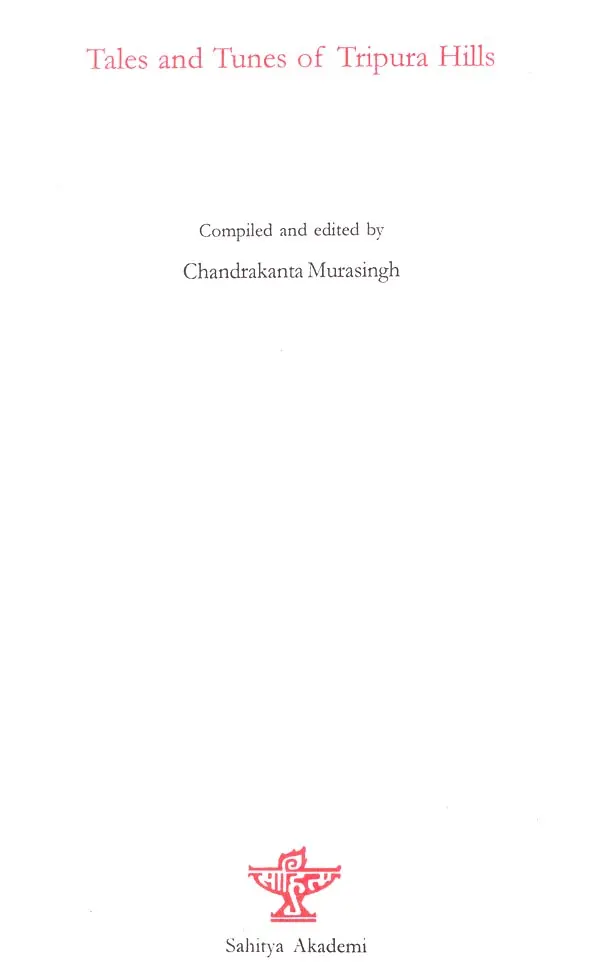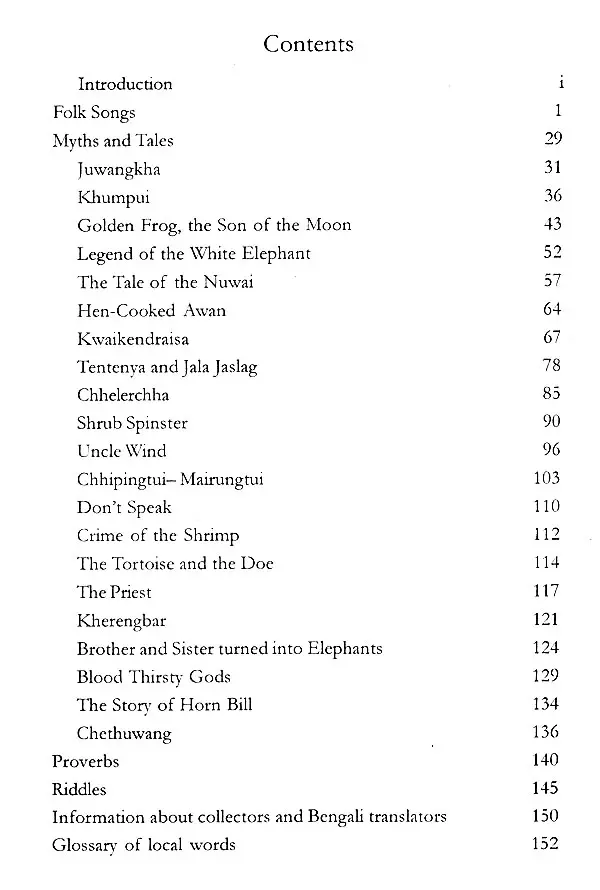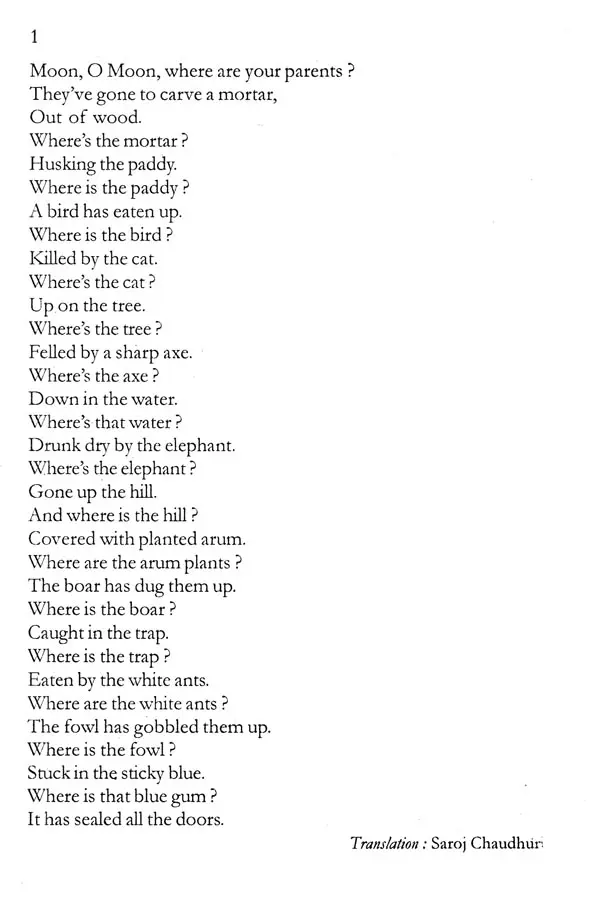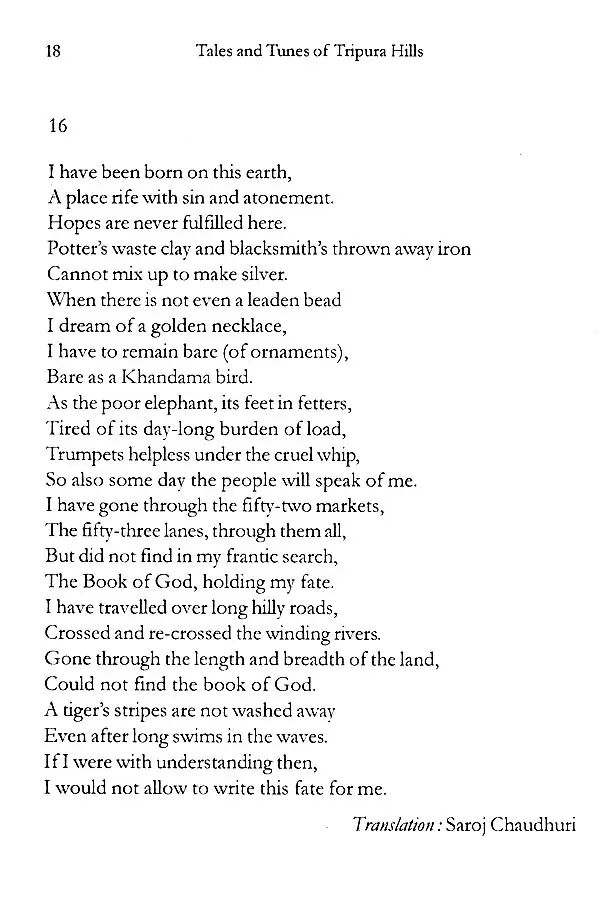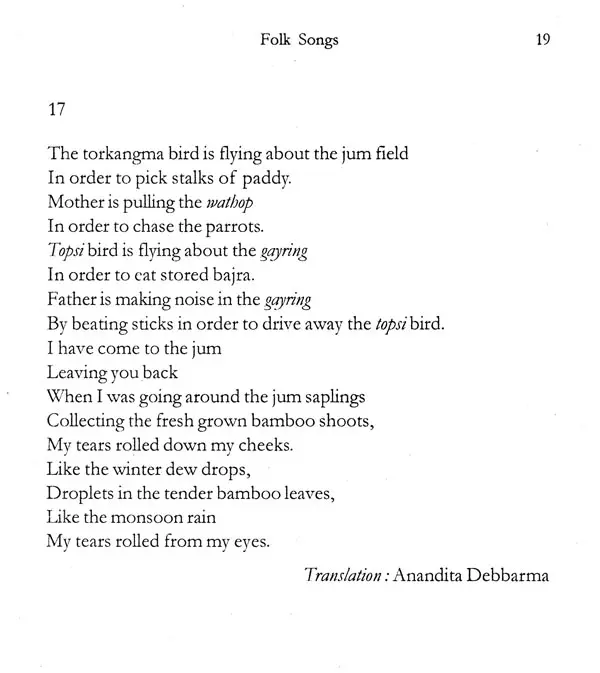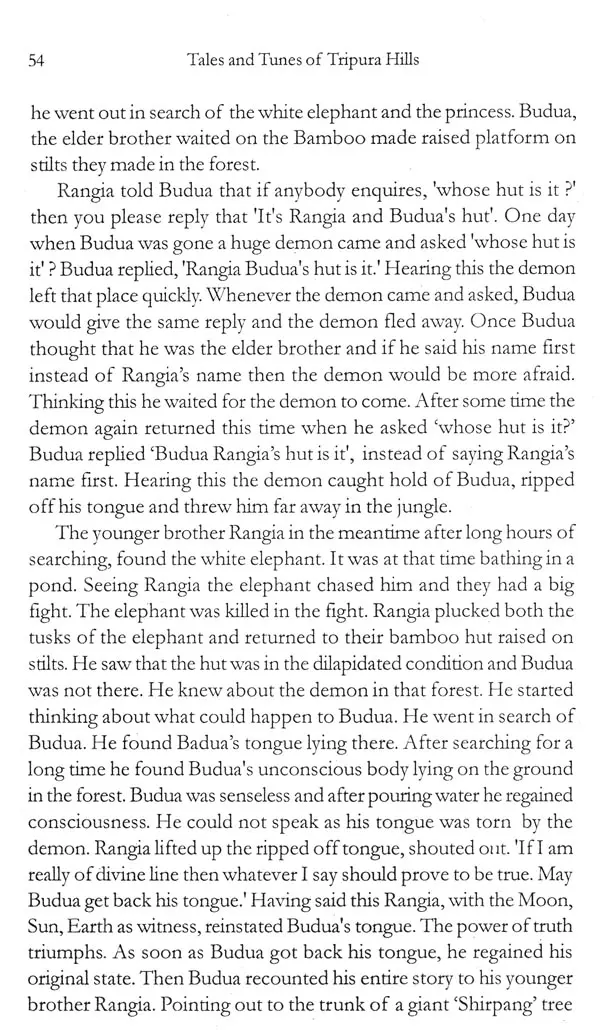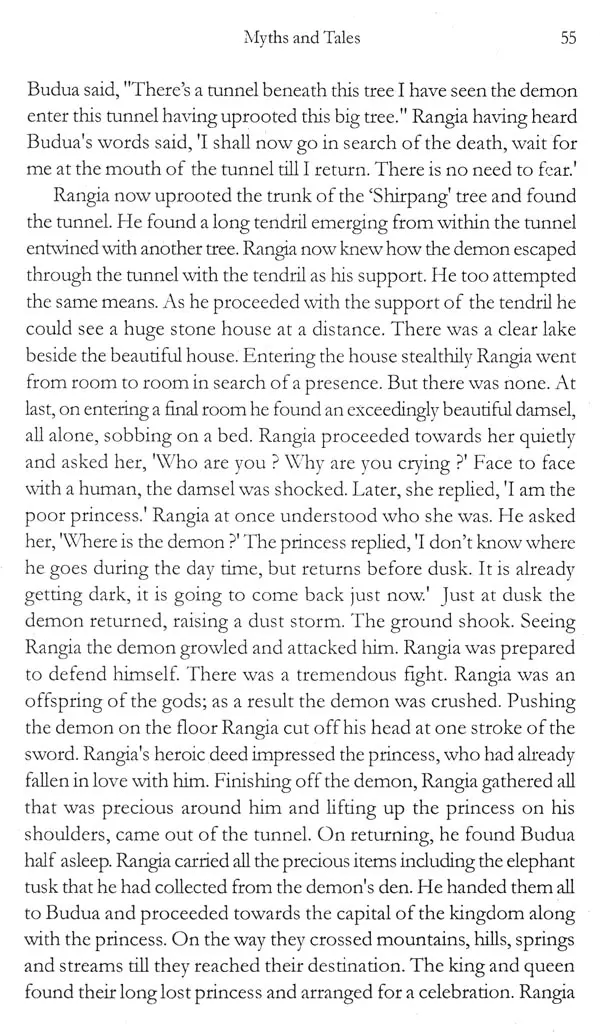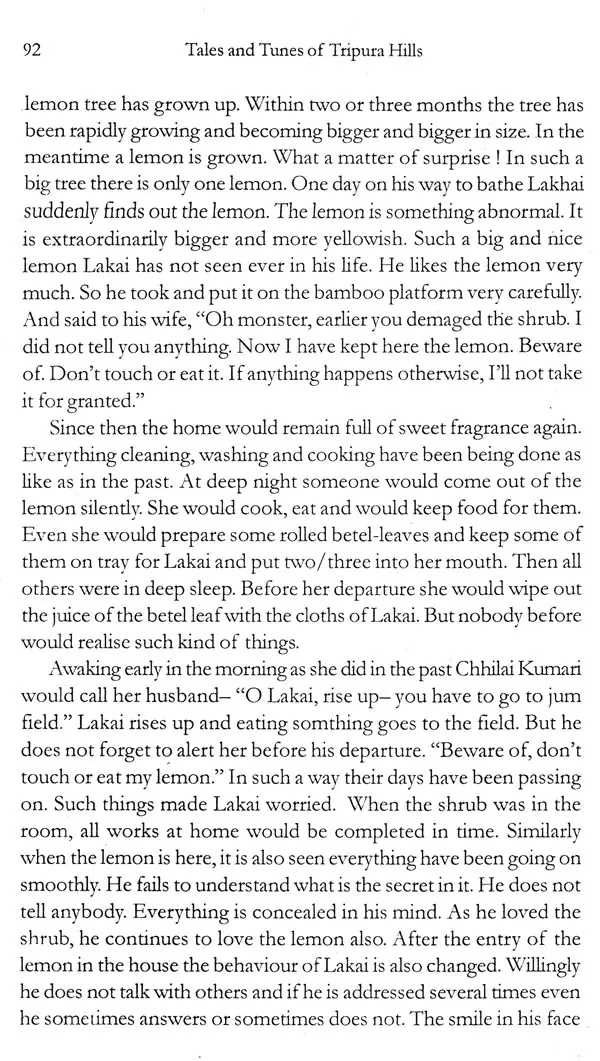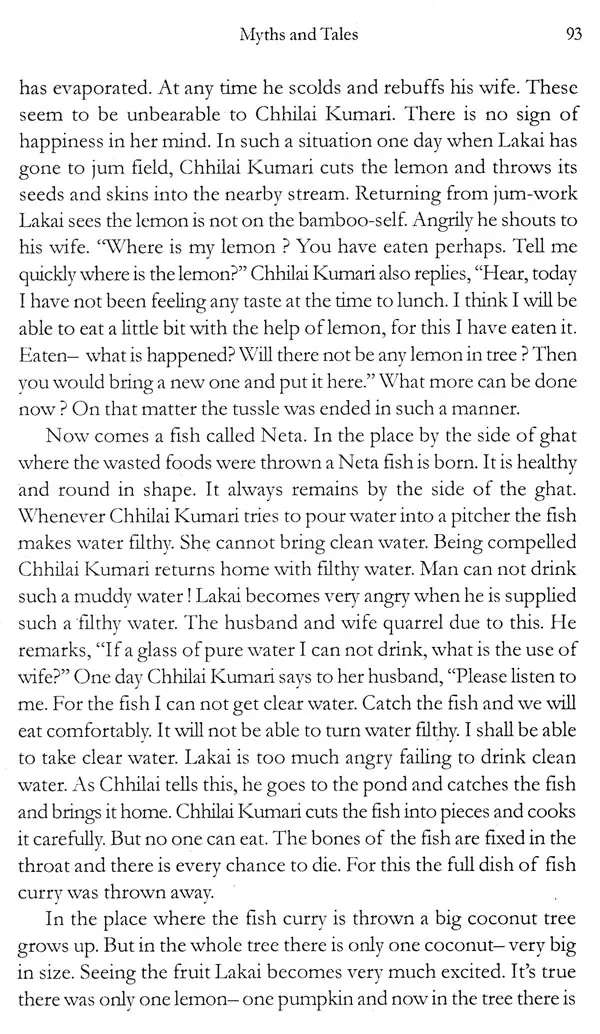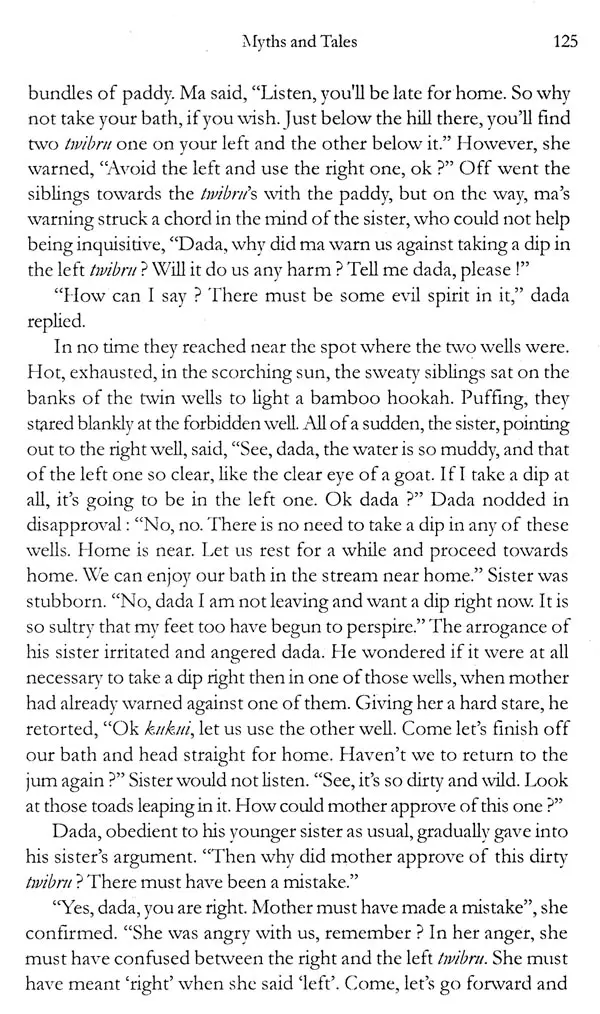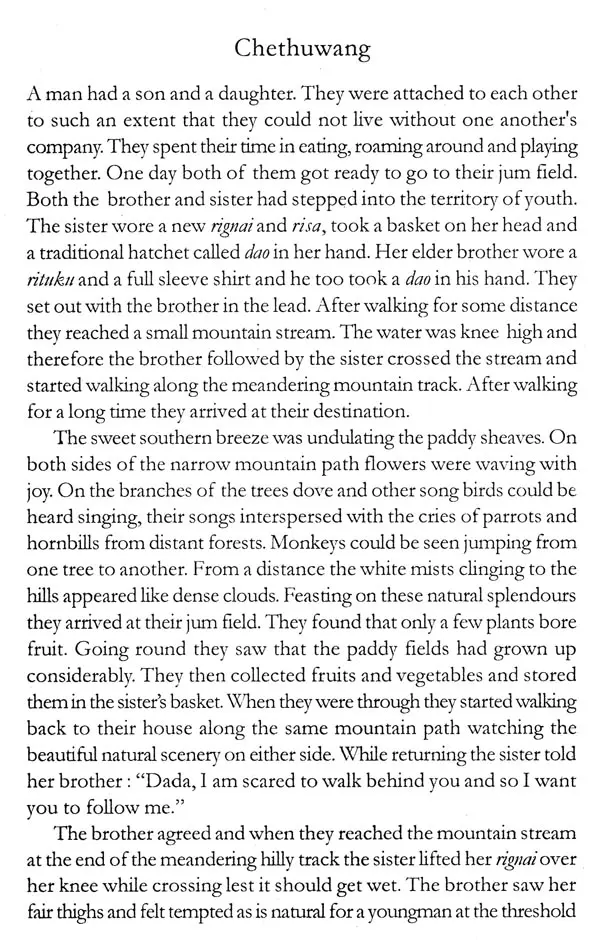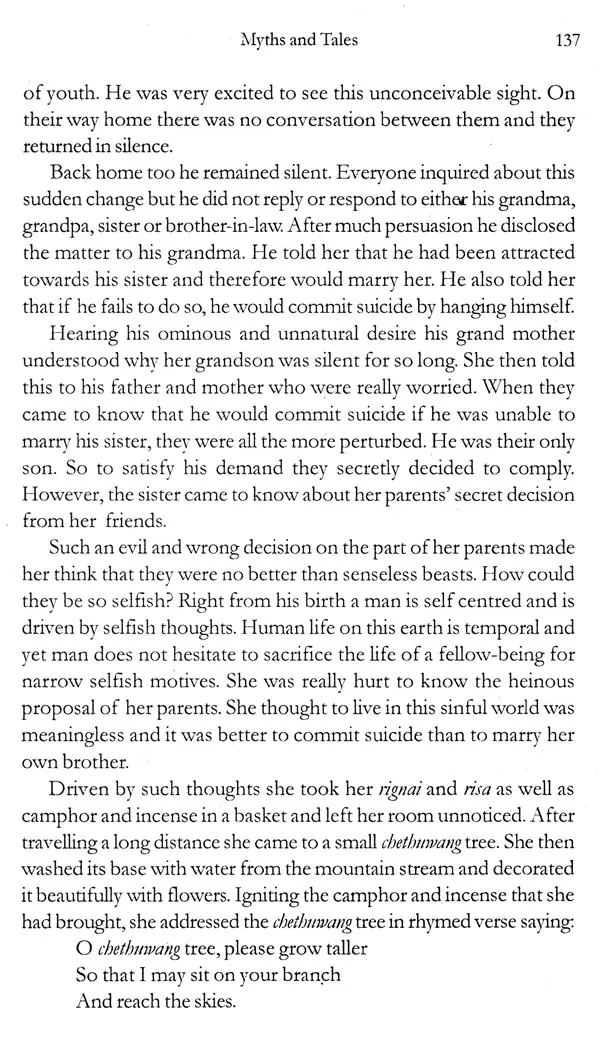
Tales and Tunes of Tripura Hills
Book Specification
| Item Code: | UBD079 |
| Author: | Chandrakanta Murasingh |
| Publisher: | SAHITYA AKADEMI, DELHI |
| Language: | English |
| Edition: | 2015 |
| ISBN: | 9788126048977 |
| Pages: | 165 |
| Cover: | PAPERBACK |
| Other Details | 8.50 X 5.50 inch |
| Weight | 240 gm |
Book Description
It is believed that the state of Tripura and the Tripuns existed during and earlier to the time of the Mababbarata. The mother tongue of the Tripuris, the majority tribe among the indigenous people of the state is 'Kokborok' Eight communities of the original inhabitants of Tripura speak this language (Kokborok) which belongs to the Bodo' branch of the Tibeto-Burmese family of languages. The communities which speak 'Kokborok' are Tipra, Reang, Noatia, Jamatia, Rupini, Kaloi, Murasingh and Uchai. The meaning of the word 'Kokborok' is 'language of the borok race'.
The folk literature has great value as the material for social history. To know and understand the customs of the society, its totem and taboos, the folk literature remains the richest source. Kokborok folk songs speak the joys and sorrows of the people, while folk tales reveal the faith, beliefs and the values of the Tripuris. Twenty-six Folk songs, twenty-one Myths and Tales, one hundred and two Proverbs and One hundred Riddles have been included in the compilation.
Chandrakanta Murasingh, compiler and editor of the title is a renowned Kokborok poet. He is the founder of Kokborok Sahitya Akademi and is the main encouraging force behind translation of Kokborok literature into English. He has a number of books of poems to his credit and published his anthologies in English translation. He has received Sahitya Akademi's Bhasa Samman Award in 1996.
During the days of the legendary illustrious kings of northern India, this land of ours was known as 'area forsaken by the Pandavas It was known as a land of inaccessible hills and turbulent rivers, of dark deep forests and treacherous marshes. It was considered infested with ferocious wild animals, poisonous repüles and insects, the land of Kirats' and 'Rakshasas' Pandavas came here, but left the place at the earliest Bhum marned Hidimba, a daughter of Cachar and Arjuna fell in love with Chitrangada, the Manipur princess. The Pandavas spent their bref stay of recreation on this hunting ground, and then It was soon forgotten. These stones from the Mahabharata are known all over the country, valour and divinity of the heroes held in greatest esteem. Though the characters themselves had never stayed here for long, the ruling houses of this area discovered link with them, shanng their greatness, heroism and divine connections- either as descendants or as rivals. According to the Mahabharata, the king of Tripura, Tnpur, fought against the Pandavas in the Kurukshetra battle Much of these claims and connection might have been figmented, but the truth remains that the state of Tnpura and the Tnpuns existed during and earlier to the time of the Mahabharata. As one of the most ancient races, the culture of the Tripuris stands close to that onginal source of culture which now has spread all over the sub-continent in wide expanse and nch and varied hues.
The Tripuris inhent a bright tradition of folk-culture and folk- literature: Kokborok folk-literature and folk-songs embrace all aspects of life, taking in all the events and occassions of birth, death, marnage, love, dreams, frustrations, achievement and failure. They reflect the desires and privations, the splendours of nature around and the cruel indifference of nature. They spell out the feelings and emotions that constitute the chequered pattern of life To rest of India, all recently, this nch treasure coming down from very ancient times, had remained unknown. In collaboration with Kokborok Sahitya Akademi, the Sahitya Akademi organised English translation workshop on Kokborok folk-songs, myths, tales, proverbs and riddles, under guidance from the septuagenarian well known personalities like Saroj Chaudhun as Director of the Workshop and Bamapada Mukherjee as the other resource person. A host of resource persons extended their unstinted support. Goutam Paul of Sahitya Akademi contributed suitably for organising the workshop and publicaton of the book Some of the materials were collected directly from oral narrations and a part of them from Bengali translations Scholars and researchers like Kumud Kundu Chaudhuri, Rabindra Kishore Debbarma and Narendra Chandra Debbarma extended their personal collections for use. The Tribal Research Institute helped the workshop in all possible manner.
With passing of time the present generation is moving away from the treasure and pleasure of folk-literature and folk-songs. Their acquaintance with the contents, themes and tunes is growing thinner In our childhood days we have seen audience held spell-bound till the end. Nor the narrator could leave a story unfinished. There is a Kokborok saying 'One who leaves a tale unfinished is caught by a tiger', it definitely refers to a folk-tale. With a not so proficient narrator it sometimes presented a problem. An anecdote comes to mind. An old aunt, who did not have the skill of an accomplished narrator, once started a folk-tale in the evening The aunt could not hold the attention of her audience in the long tale. Many fell asleep but because of the threat in the popular belief of being caught by a tiger if the tale is left unfinished, the aunt continued her story throughout the night, all alone.
A small part of the folk-literature treasure of Kokborok is presented here. We know that a translation can never render the exact taste of the original, but it can introduce the material, and in case of efficient translation, much of the flavour is retained. If the flavour can be felt, even in part, by the readers, the effort will justify itself.
**Contents and Sample Pages**
